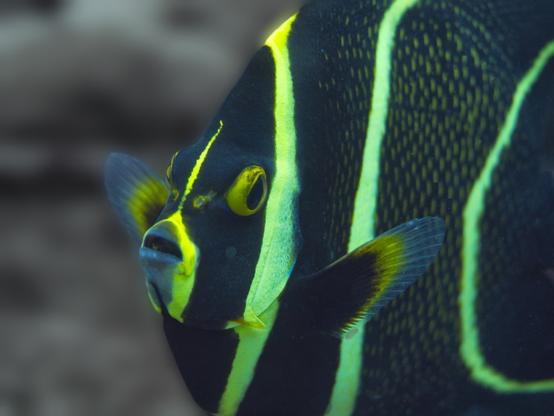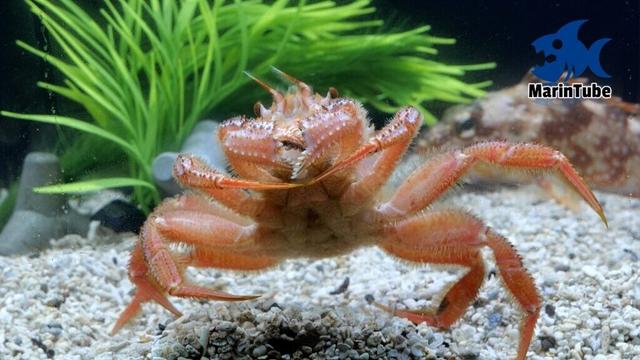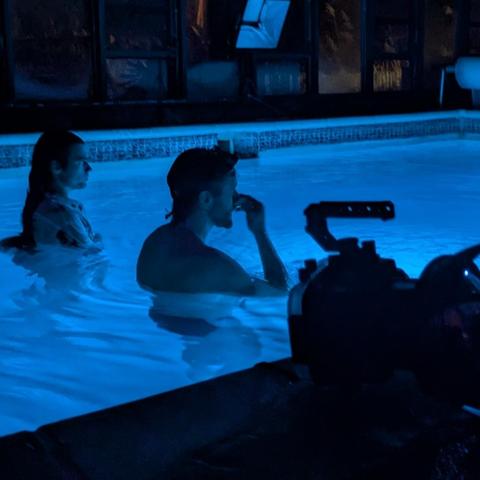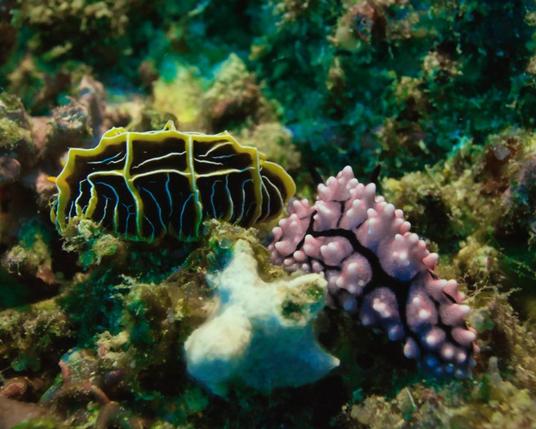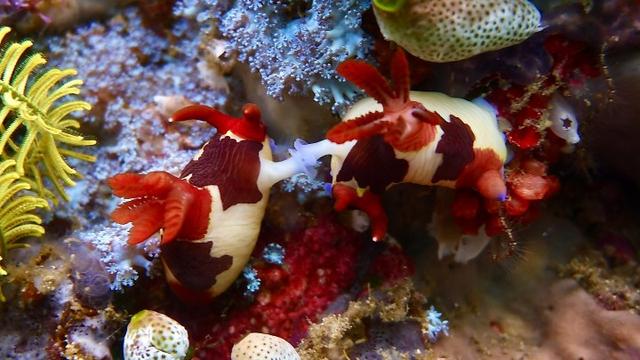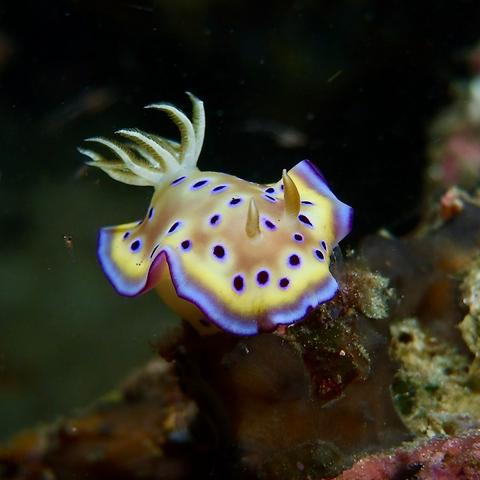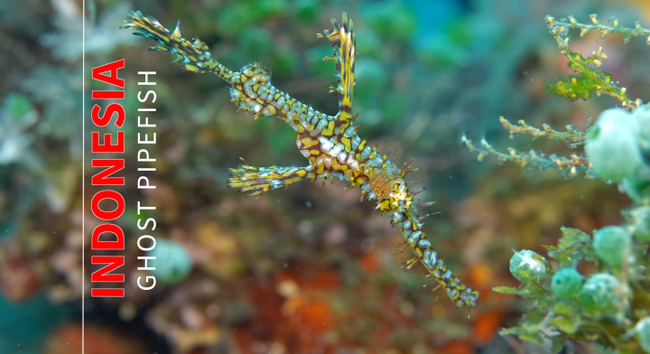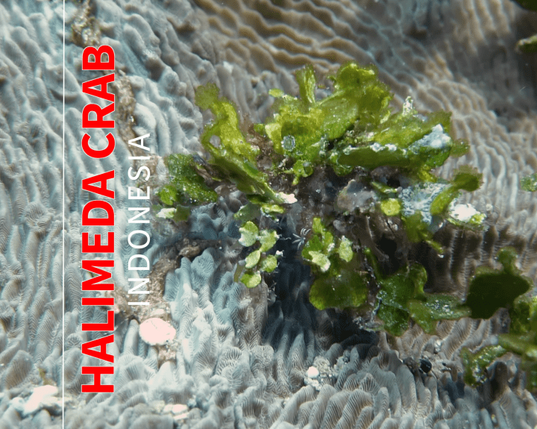#underwatervideo
Costa Brava
#flounder
#snorkelling #snorkeling #snorkel
#underwatervideo #goprounderwater
Our team at #TheScubaNewsEgypt love diving with these beauties. Do you? 💙
🤿 ❤️ 👌
🎥 marine_pla18913 on X
#Scuba #Diving #ScubaDiving #Underwater #UnderwaterVideo #TSN #TheScubaNews
Beautiful 💙
🤿❤️👌
🎥 _OceanEducation on X
#Scuba #Diving #ScubaDiving #Underwater #UnderwaterVideo #TSN #TheScubaNews
Serrano
#paintedcomber
#snorkelling #snorkeling #snorkel
#underwatervideo #goprounderwater
La vieja colorada
#parrotfish
#canaryislands
#snorkelling #snorkeling #snorkel
#underwatervideo #goprounderwater
#tubeworms #CostaBrava #goprounderwater #underwatervideo
Costa Brava
#cuttlefish #snorkelling #snorkeling #underwatervideo #goprounderwater
The Critter Capital of the Caribbean: Diving St. Vincent
Diving in St. Vincent is a haven for Caribbean critters! Its thriving reefs are teeming with marine life, making every dive an exciting hunt for hidden gems. Over a week of exploration, we encountered elusive orange and green frogfish, mesmerizing nudibranchs, and dazzling displays from squid and octopus.
With an incredible diversity of macro life, St. Vincent truly lives up to its reputation as the ‘Critter Capital of the Caribbean’!
I shot the footage using a Panasonic GH5 in a Nauticam underwater housing and edited it in Final Cut Pro. The music was composed by me.
#critterCapitalOfTheCaribbean #DiveStVincent #marineLife #Nature #ScubaDiving #seaLife #UnderwaterVideo #wildlife
毛ガニを水槽でペットにしてみた結果がスゴイ #釣魚飼育11 https://www.moepets.com/959673/ #aquarium #dog #fish #fishing #Inu #MarinTube #SaltwaterFish #ScubaDiving #Seabed #Underwater #underwatervideo #アオリイカ #アクアリウム #あし #いか #エギング #スクーバダイビング #ダイビング #ヒットシーン #フィッシング #マリンスポーツ #マリンチューブ #捕食 #日本テリア #毛ガニ #毛蟹 #水中動画 #海中 #海中動画 #海底 #海水魚 #海釣り #網 #釣り #飼育
https://www.wacoca.com/tour/434534/ yellow submarine project・熊本県菊池市竜門ダム・水中動画2025年2月(Ryumon Dam, Kikuchi City, Kumamoto Underwater video) ##kumamoto ##熊本県 #KikuchiCity #RumonDam #UnderwaterVideo #YellowSubmarine #水中動画 #熊本 #熊本ツアー #熊本県ツアー #熊本県観光 #熊本観光 #竜門ダム #菊池市
Seagrass Nomad: Octopus Discovers a Shipwreck Sanctuary
An octopus embarks on a captivating underwater odyssey off the coast of Statia, navigating the Caribbean’s vibrant reefs. Venturing from the protective embrace of seagrass meadows, this intelligent and graceful cephalopod embarks on a cautious exploration of its surroundings, ultimately reaching the intriguing remnants of a historic shipwreck.
Its journey is a captivating odyssey, a testament to the remarkable adaptability and intelligence of these extraordinary creatures.
Share this:
- Click to email a link to a friend (Opens in new window)
- Click to share on Facebook (Opens in new window)
- Click to share on Bluesky (Opens in new window)
- Click to share on Threads (Opens in new window)
- Click to share on Reddit (Opens in new window)
- Click to share on Mastodon (Opens in new window)
- Click to share on X (Opens in new window)
- Click to share on Tumblr (Opens in new window)
- Click to share on Pinterest (Opens in new window)
#cephalopods #Nature #Octopus #ScubaDiving #shipwreck #UnderwaterVideo #wildlife
Coordinating and consulting on an #underwater music video production.
#musivideo #consultant #advisor #underwatervideo #videoproduction #training #ZorzStudios
Every year on October 29th, marine enthusiasts around the world come together to celebrate National Sea Slug Day, a day dedicated to one of the ocean’s most extraordinary and colorful creatures: the nudibranch.
https://youtu.be/2Ztct9rOLWs?si=m9_YqTQxqIZLrHHR
National Sea Slug Day was created to raise awareness about these incredible creatures and their vital role in marine ecosystems. The date coincides with the birthday of Terry Gosliner, a renowned marine biologist and nudibranch expert who has discovered over 1,000 species of these sea slugs. The day is an opportunity for divers, researchers, and nature lovers to appreciate the beauty and diversity of these animals, while highlighting the importance of ocean conservation.
Kunies Chromodoris NudibranchThree-Lobed T-Bar NudibranchPhyllidia ocellata CuvierNudibranch – Phyllidia Ocellata Cuvier, FijiNudibranchs are often called “the jewels of the ocean” due to their vibrant colors and intricate patterns. Found in oceans worldwide, these soft-bodied mollusks are known for their stunning variety—there are over 3,000 known species, with new ones still being discovered. But their beauty is more than skin-deep.
Nudibranchs have evolved a wide array of defense mechanisms. Some species, like the iconic Glaucus atlanticus (blue dragon), feed on venomous creatures like Portuguese Man O’ War and absorb their stinging cells to protect themselves. Others use their bright colors to warn predators of their toxicity or to blend into their surroundings.
Despite their often bright appearances, many nudibranchs are experts at camouflage. Some species can mimic the colors and textures of their environment to evade predators or sneak up on their prey.
Nudibranchs can produce their own toxins or sequester toxic compounds from the prey they eat. This ability to harness the defenses of other organisms is a unique adaptation that helps them thrive in the competitive underwater world.
Nudibranch Puerto GaleraHalgerda batangas, NudibranchFrom the flamboyant Spanish dancer (Hexabranchus sanguineus) with its flowing red body to the tiny yet vividly colored Nembrotha cristata, nudibranchs come in an astonishing array of shapes, sizes, and colors. Their diversity makes them a favorite subject for underwater photographers and marine biologists alike.
https://www.youtube.com/watch?v=Pm4klpakneY
Nudibranchs are indicator species, meaning their presence can be used to gauge the health of marine ecosystems. Changes in their populations often signal shifts in environmental conditions, making them vital in the study of ocean conservation.
Share this:
https://scubahanknyc.com/2024/10/29/dive-into-the-fascinating-world-of-nudibranchs/
#ecotourism #Nature #Nudibranch #seaLife #seaSlugs #underwaterPhotography #UnderwaterVideo #wildlife
Octopuses are highly intelligent creatures capable of solving puzzles, using tools, and even escaping enclosures. Their problem-solving skills are comparable to those of some vertebrates, making them one of the smartest invertebrates in the animal kingdom.
Octopuses have three hearts—two pump blood through their gills, while the third circulates it to the rest of the body. Their blood is blue due to hemocyanin, a copper-based molecule that helps them transport oxygen in cold, low-oxygen environments.
The blue-ringed octopus, despite being only the size of a golf ball, is one of the most venomous animals in the world. Its venom contains a neurotoxin called tetrodotoxin, which can cause paralysis and is potent enough to be fatal to humans. The bright blue rings serve as a warning signal when the octopus feels threatened.
https://youtu.be/oIBqex8ghXc?si=DrW_8M2gmAn750gk
Octopuses have specialized skin cells called chromatophores that allow them to change color, texture, and pattern almost instantly. This helps them blend into their surroundings, evade predators, or communicate with other octopuses.
Share this:
https://scubahanknyc.com/2024/10/08/octopus-intelligence-camouflage-and-sometimes-deadly/
#BlueRingedOctopus #ecotourism #Nature #Octopus #Photography #UnderwaterVideo #wildlife
Cuttlefish are masters of camouflage, capable of rapidly changing their skin color and pattern to blend into their surroundings, communicate, and ward off predators. This remarkable ability is due to specialized skin cells called chromatophores, leucophores, and iridophores. Chromatophores contain pigments in red, yellow, brown, and black, and can expand or contract to alter the color of the cuttlefish’s skin. Underneath these are iridophores and leucophores, which reflect light and create iridescent and white hues, respectively. By manipulating these cells, cuttlefish can produce a wide range of colors and patterns, often within seconds.
In addition to camouflage, cuttlefish use color changes for communication during mating rituals or to signal aggression. Their ability to mimic the textures and colors of their environment so precisely not only helps them avoid predators but also allows them to ambush prey effectively. Observing a cuttlefish seamlessly blend into its surroundings and then flash vibrant colors to communicate or deter threats is a testament to the sophisticated survival strategies employed by these intelligent cephalopods.
Share this:
https://scubahanknyc.com/2024/09/16/color-shifting-cuttlefish/
#cephalopods #Cuttlefish #Indonesia #Nature #palau #ScubaDiving #seaLife #siladen #UnderwaterVideo
The ornate ghost pipefish (Solenostomus paradoxus) is a captivating marine species found in the warm waters of Indonesia. Known for its delicate and intricate appearance, this fish is often mistaken for floating seaweed or seagrass due to its elaborate camouflage. Measuring up to 12 centimeters in length, it displays a variety of vibrant colors, including red, yellow, and black, often adorned with intricate patterns and fringes. Typically found near coral reefs and in sheltered lagoons, the ornate ghost pipefish uses its camouflage to blend seamlessly with its surroundings, providing protection from predators. It feeds on small crustaceans and plankton, sucking them into its long, tubular snout.
https://www.youtube.com/watch?v=jAaf2pC71Nw
I recently spotted this fascinating species off the coast of Siladen Island in Indonesia. This area is renowned for its rich marine biodiversity, making it a favorite among divers and underwater photographers. The ornate ghost pipefish, with its extraordinary beauty and elusive nature, is a highlight for anyone lucky enough to encounter it. Observing this species in its natural habitat was an incredible experience, showcasing the remarkable adaptations and intricate designs found in the underwater world.
I shot this on a Panasonic GH5. Here’s a link to my underwater camera set-up.
Dive guides were provide by Siladen Resort & Spa.
Share this:
https://scubahanknyc.com/2024/09/04/ornate-ghost-pipefish-indonesia/
#Nature #ScubaDiving #UnderwaterVideo #wildlife #wildlifeWednesday
The Halimeda crab, scientifically known as Huenia heraldica, is a remarkable marine creature primarily found in tropical and subtropical waters, particularly around coral reefs where Halimeda algae are abundant. These small crabs are experts in camouflage, their carapace mimicking the texture and color of the algae, providing an effective defense mechanism against predators and aiding in ambushing prey. Their diet is omnivorous, consisting of algae, detritus, and small invertebrates, which varies based on the availability of food sources in their habitat. Halimeda crabs contribute significantly to the health of coral reefs by controlling algae growth and indicating the overall well-being of their environment.
The life cycle of Halimeda crabs encompasses four distinct stages. In the egg stage, females carry fertilized eggs on their abdomen, protecting them until hatching. Once hatched, the larvae enter a planktonic phase, drifting with currents and molting as they grow. Upon completing the larval stage, juveniles settle onto the substrate and begin attaching Halimeda algae to their bodies for camouflage, a behavior that continues into adulthood. As sexually mature adults, Halimeda crabs mate and produce eggs, restarting the cycle. Throughout their lives, these crabs rely on their unique camouflage technique to blend into their surroundings and avoid predators.
Share this:
https://scubahanknyc.com/2024/08/14/underwater-camouflaged-gems-halimeda-crabs/
#halimedaAlgaeCrab #Indonesia #Nature #seaLife #underwaterCreatures #UnderwaterVideo #wildlife
Bonaire, a Dutch island nestled in the southern Caribbean, isn’t just another beach destination. This tiny island boasts the title of “Shore Diving Capital of the World,” and for good reason. Unlike many dive locations where boats are the primary access point, Bonaire’s fringing reefs run parallel to the shore, allowing divers to explore a kaleidoscope of underwater wonders with just a giant stride off the beach.
The ease of shore diving combined with Bonaire’s commitment to marine conservation makes it a haven for divers of all levels. Crystal clear waters offer exceptional visibility, perfect for spotting the incredible variety of marine life. Colorful angelfish and butterflyfish flit amongst vibrant coral formations, while turtles graze on the seabed and playful dolphins might zip alongside you.
The video above features highlights from an incredible week exploring the underwater world of this Caribbean paradise in less than 2 minutes.
Share this:
https://scubahanknyc.com/2024/08/01/bonaires-underwater-paradise-a-divers-dream-week/
#Bonaire #Caribbean #Nature #ScubaDiving #seaLife #UnderwaterVideo #wildlife
